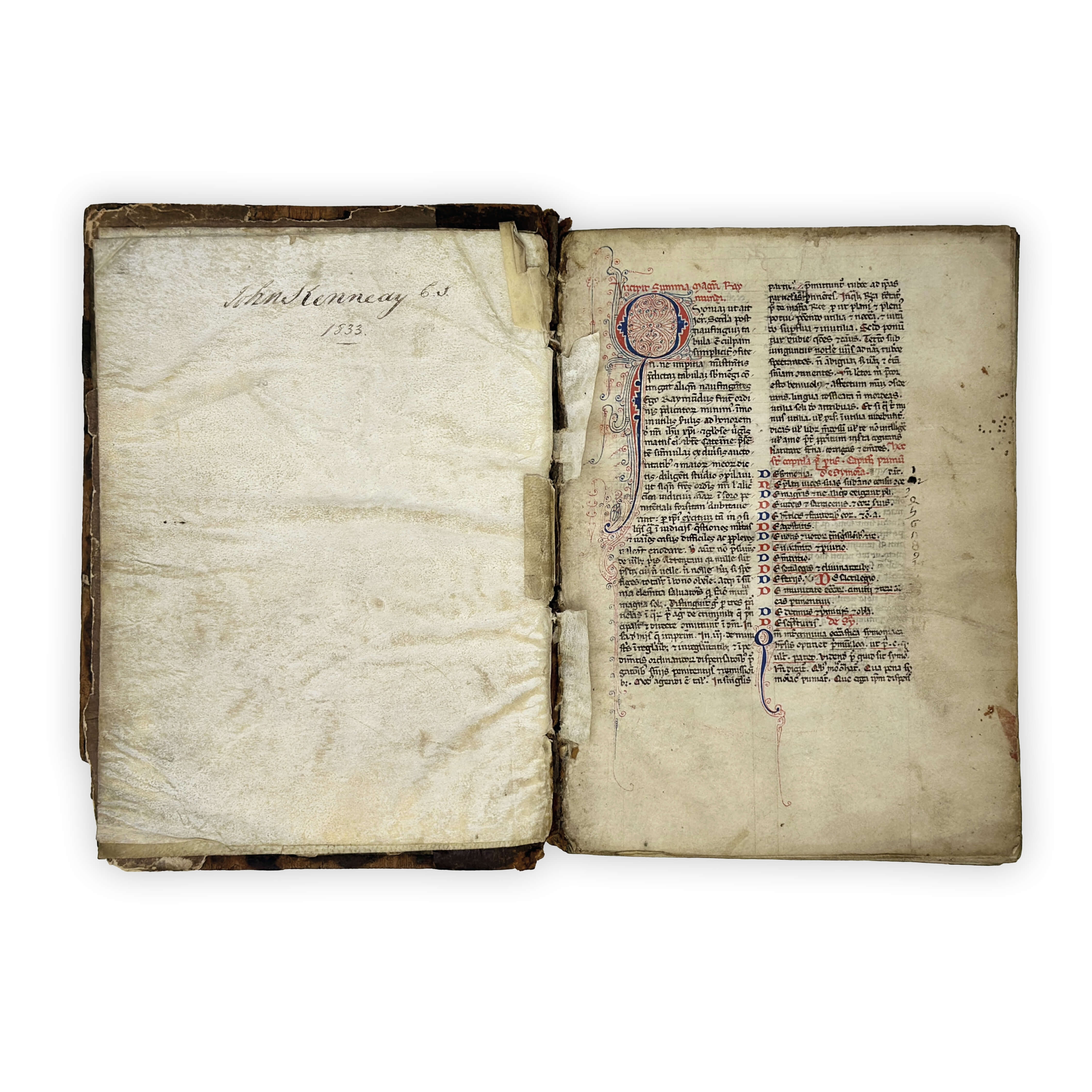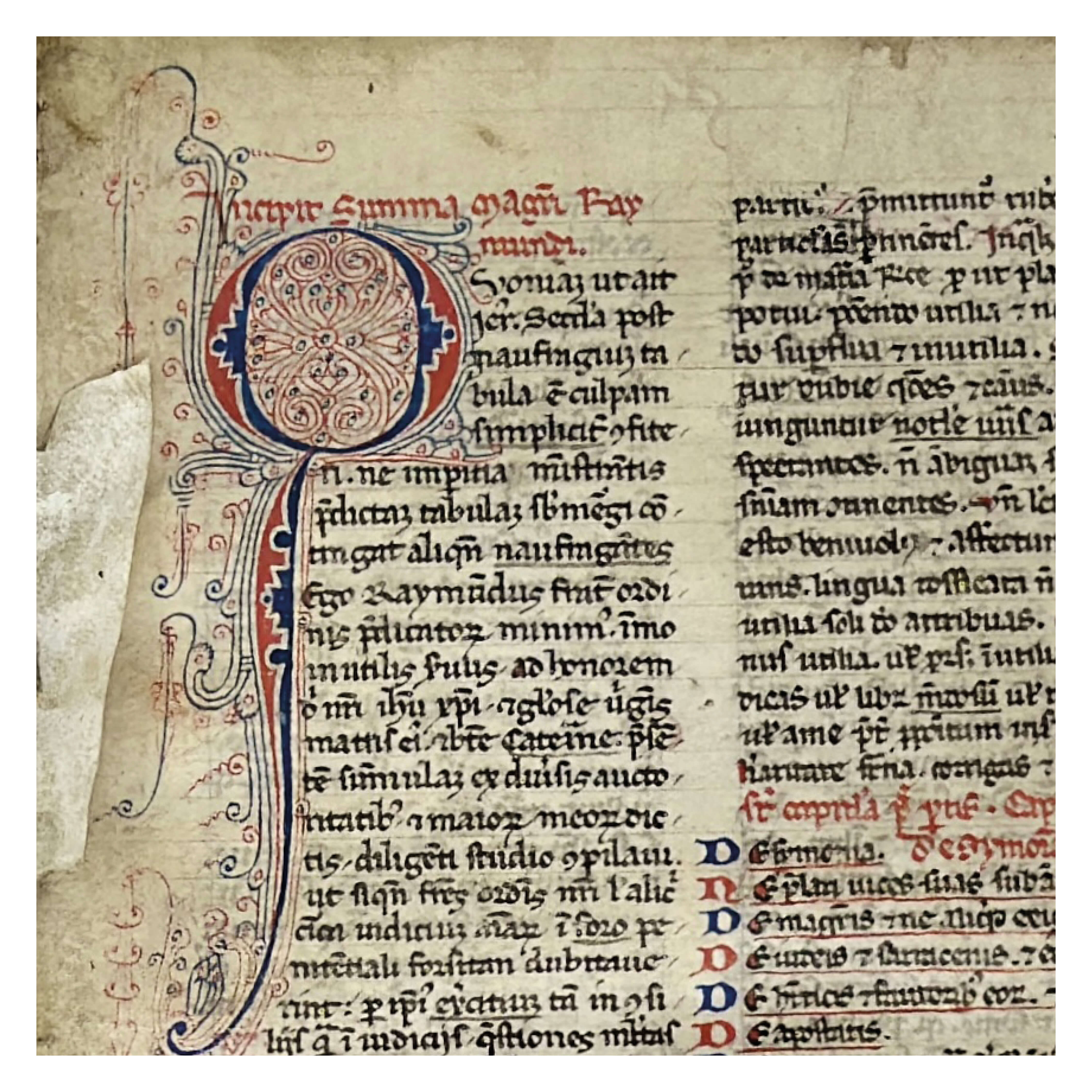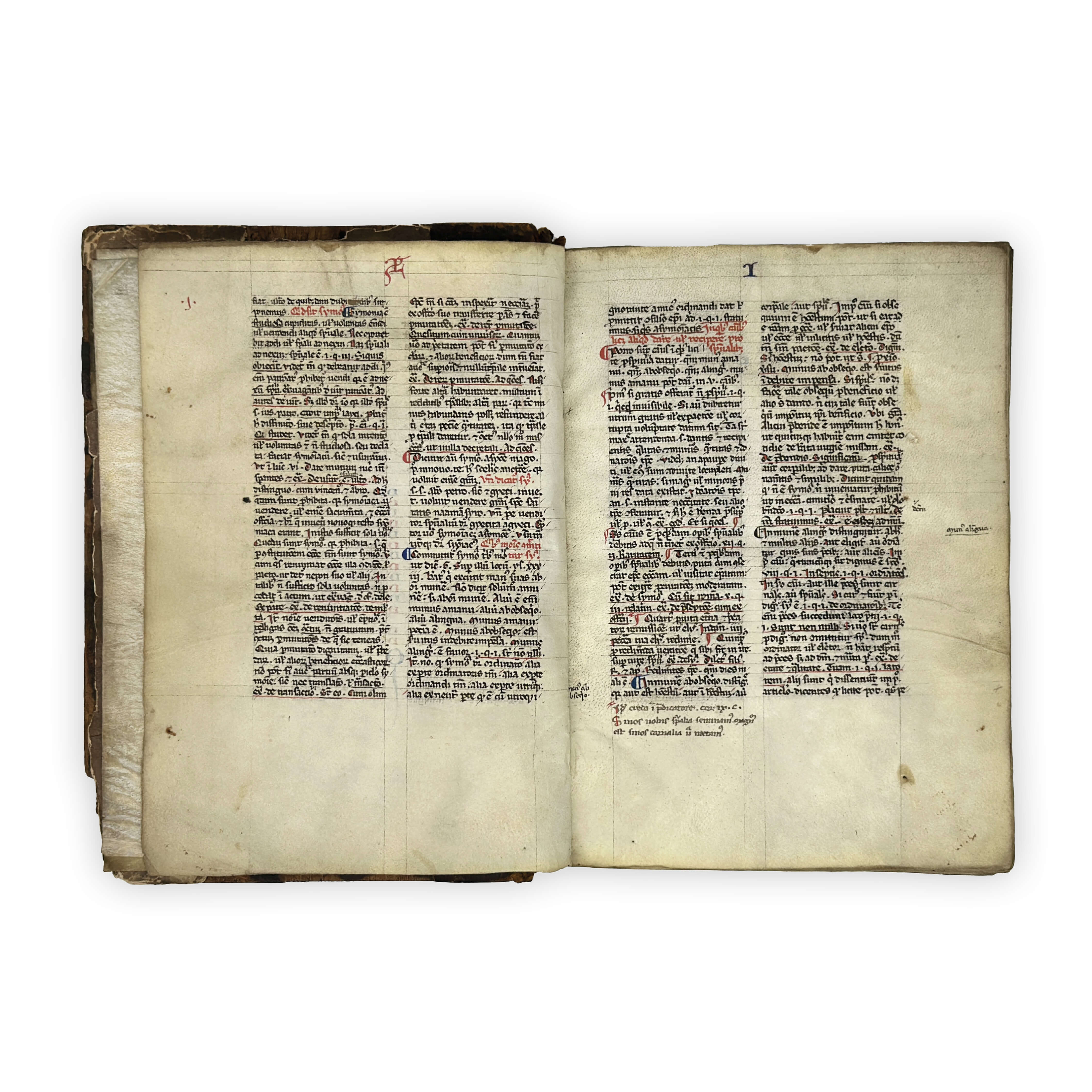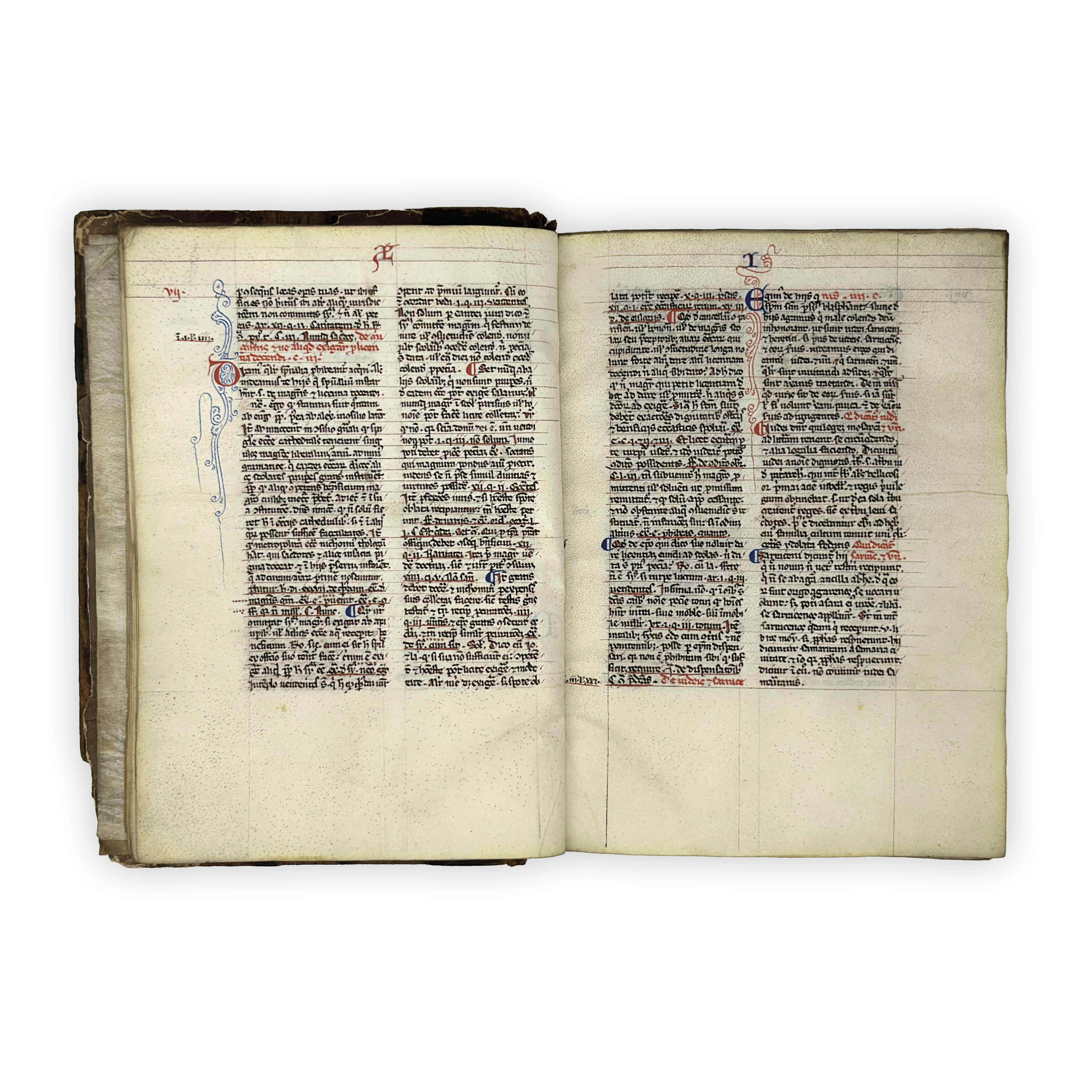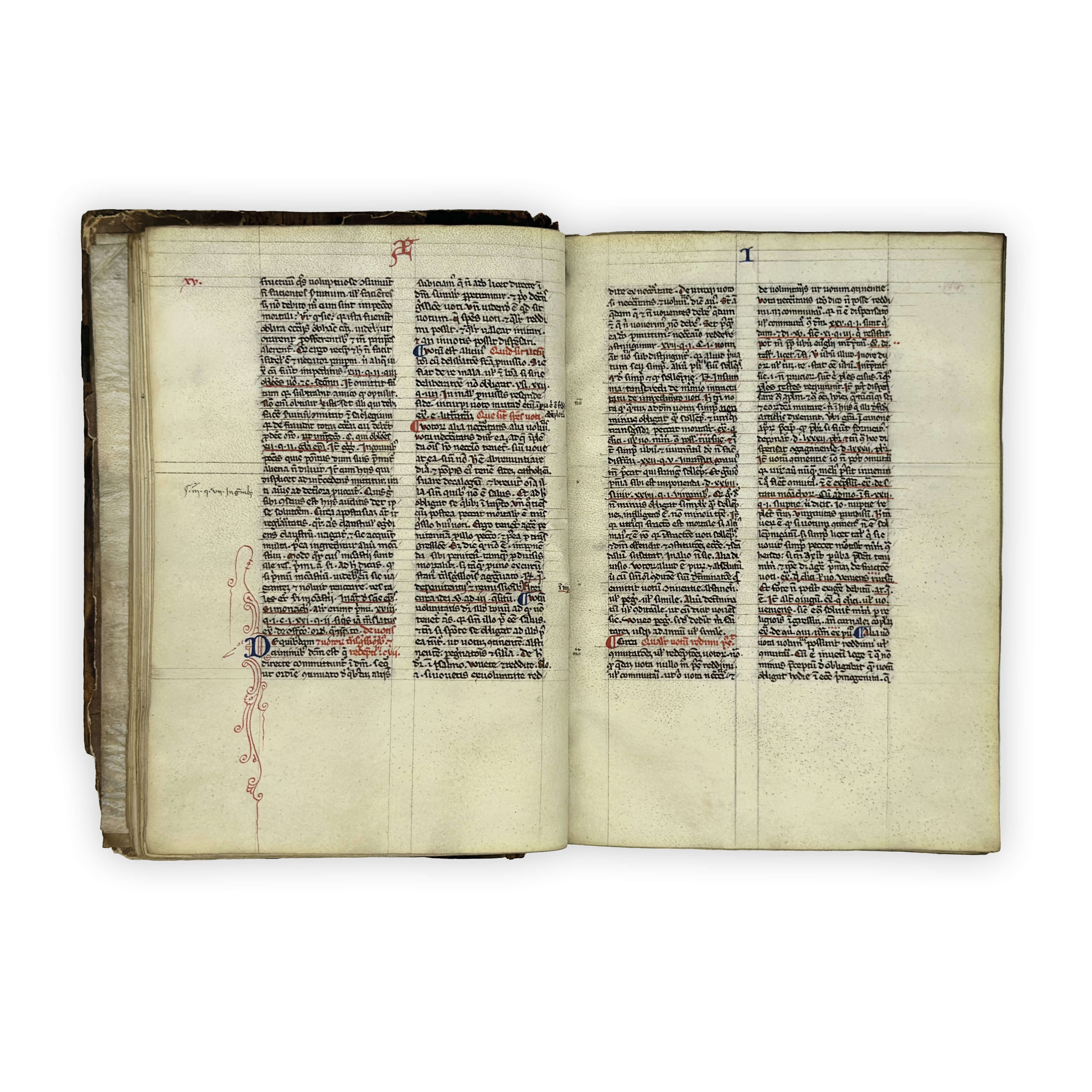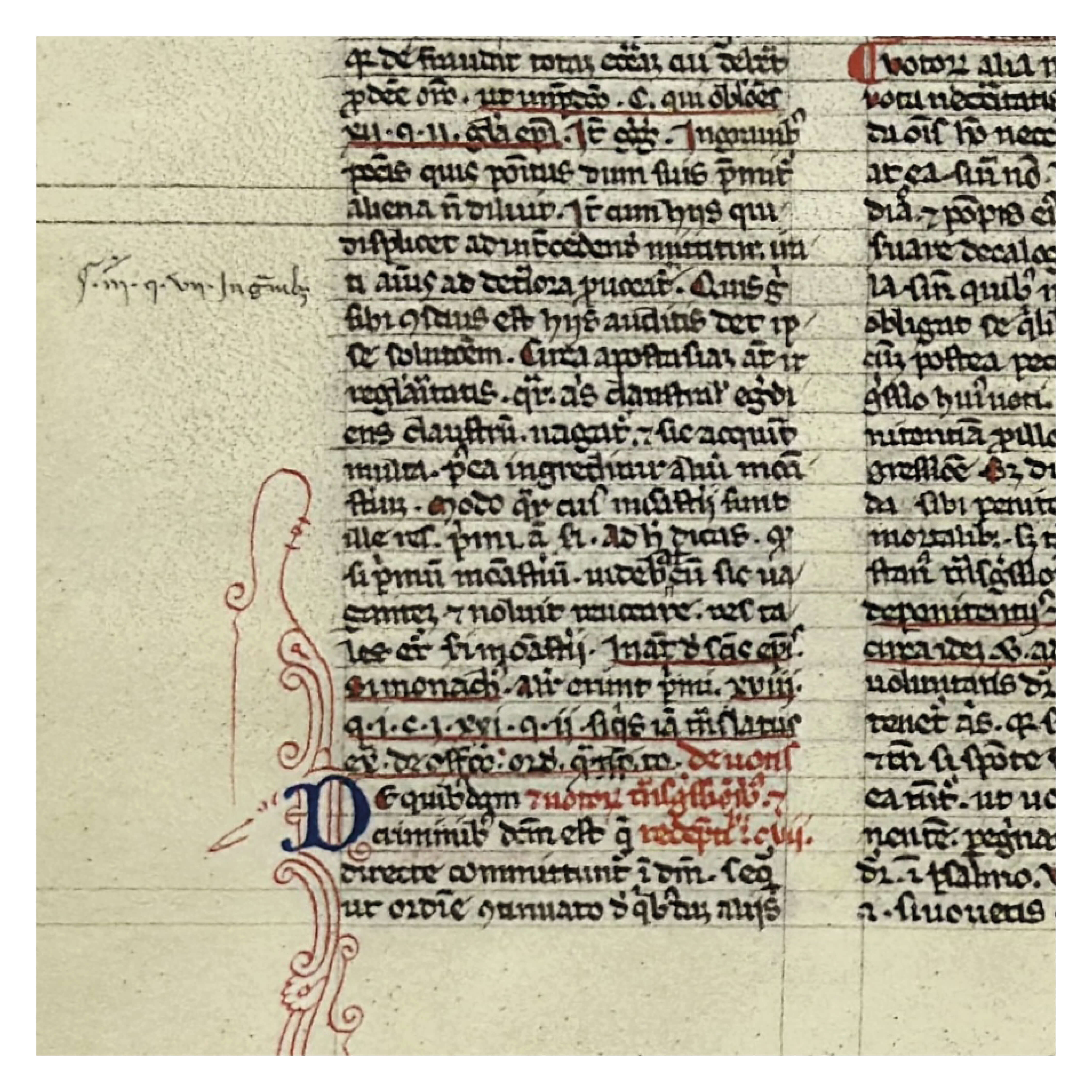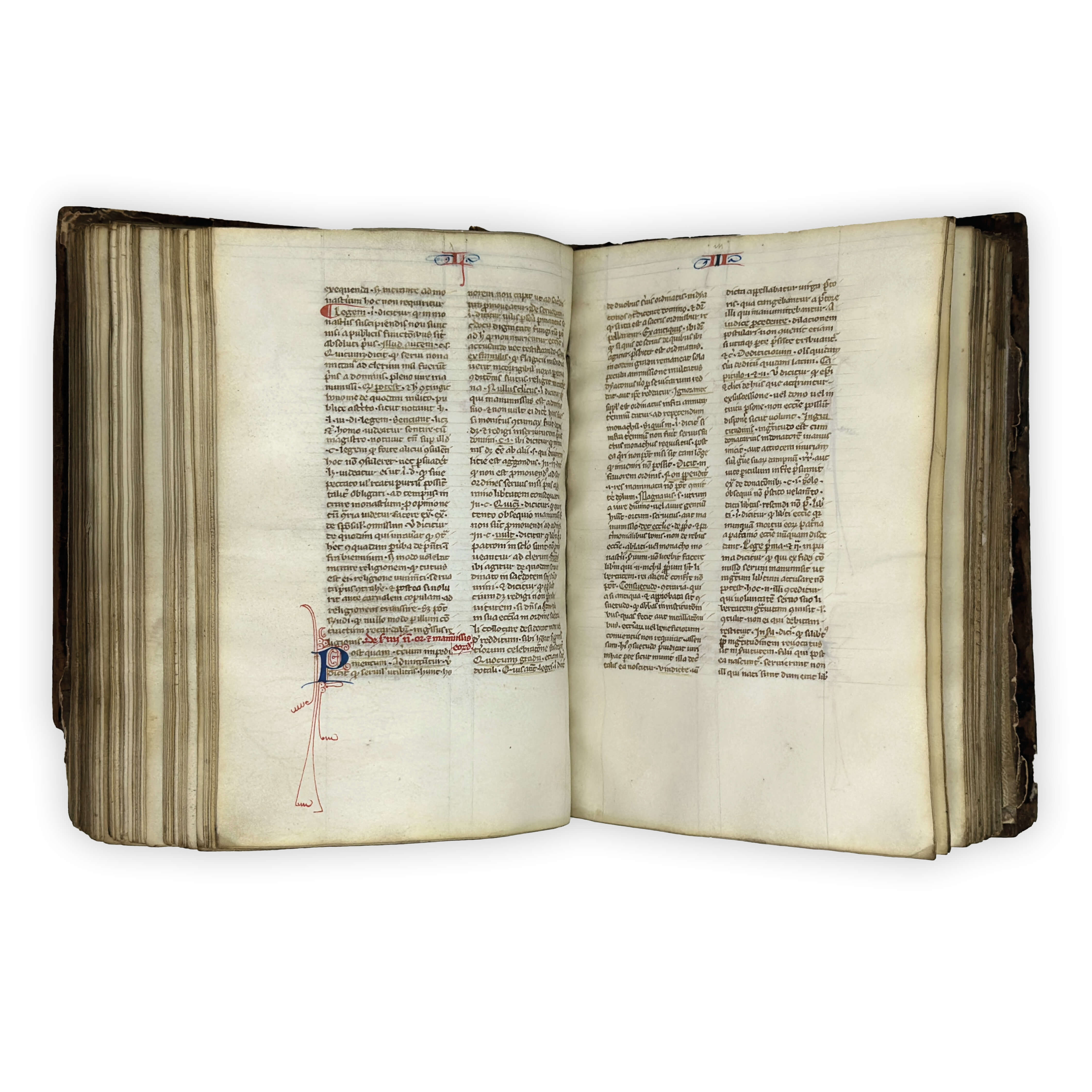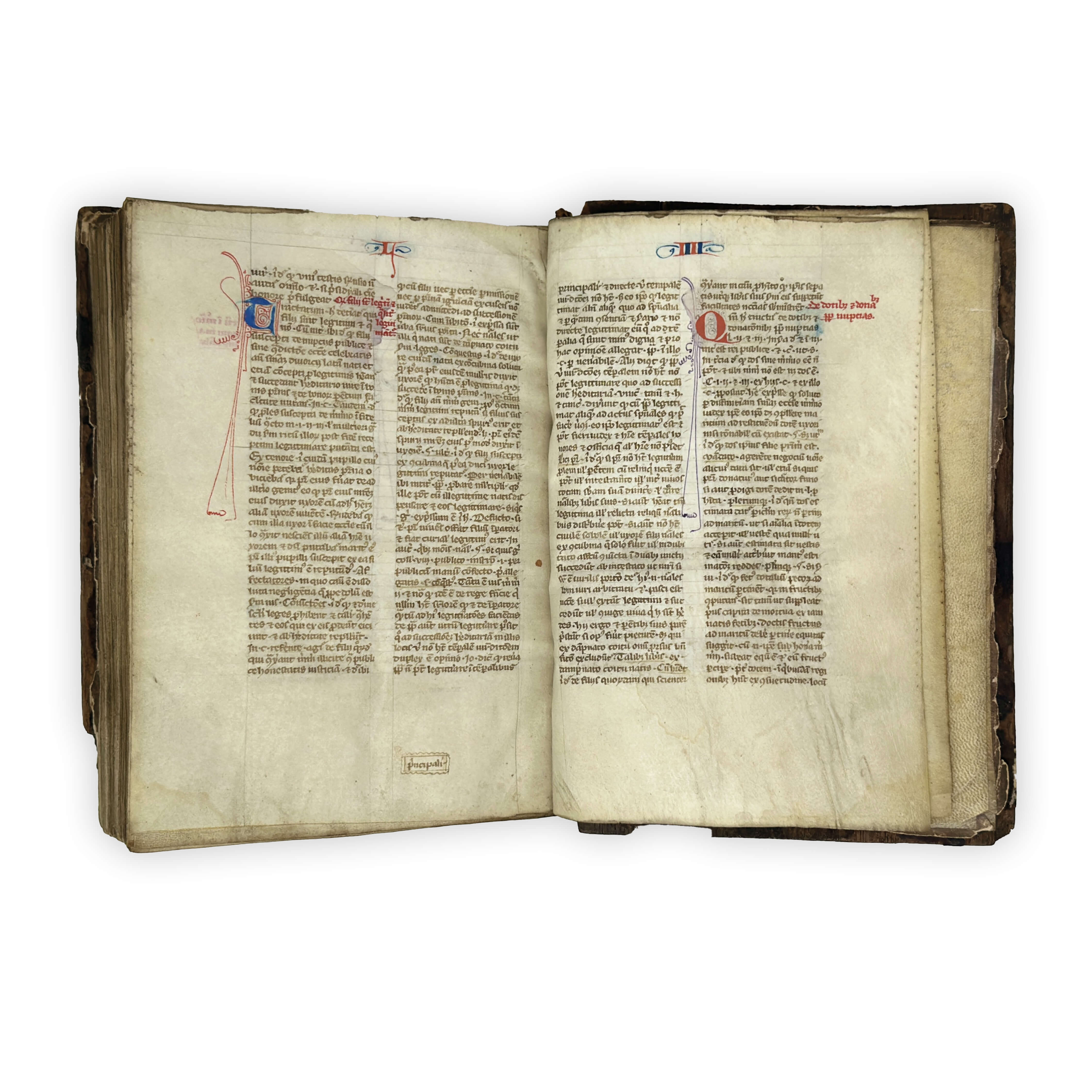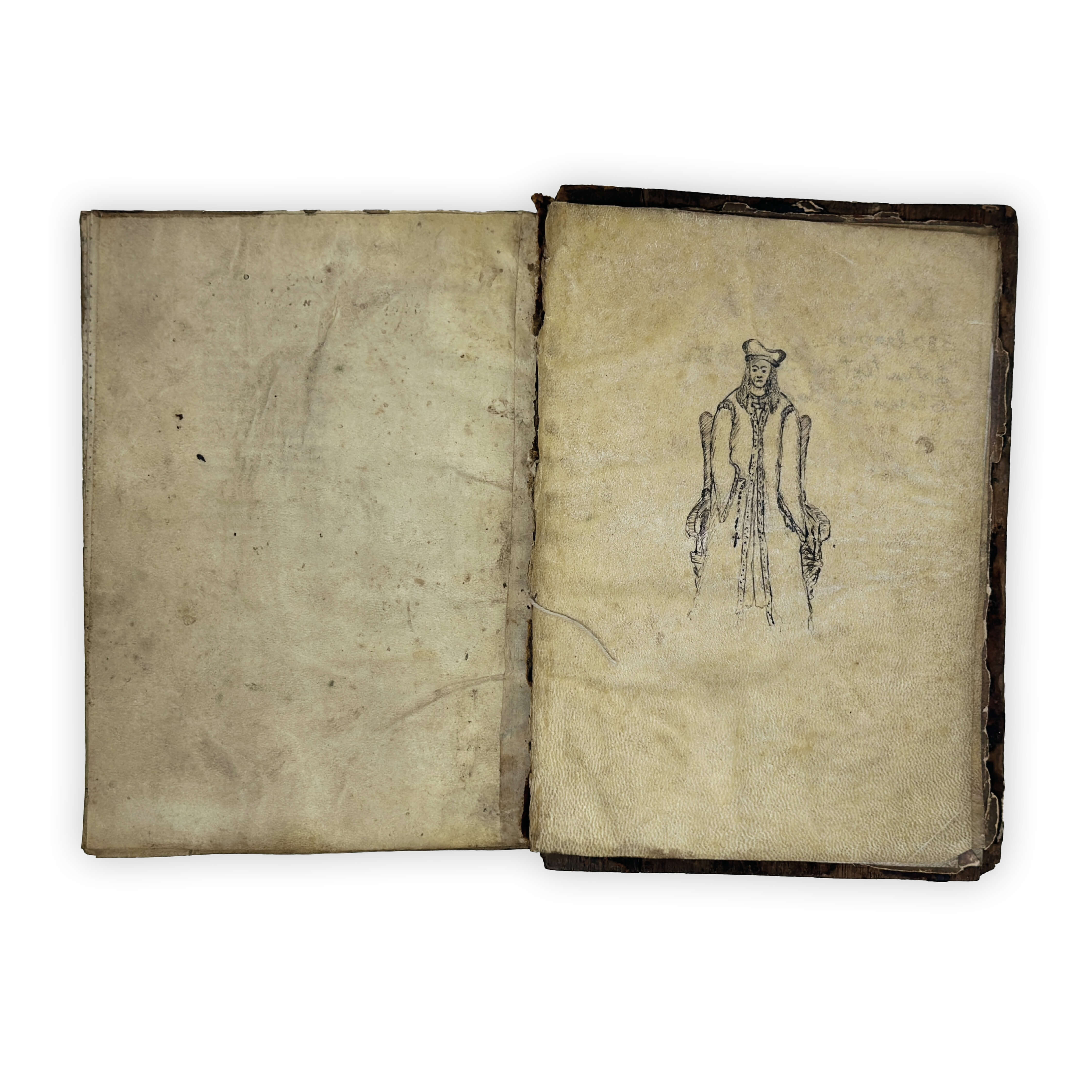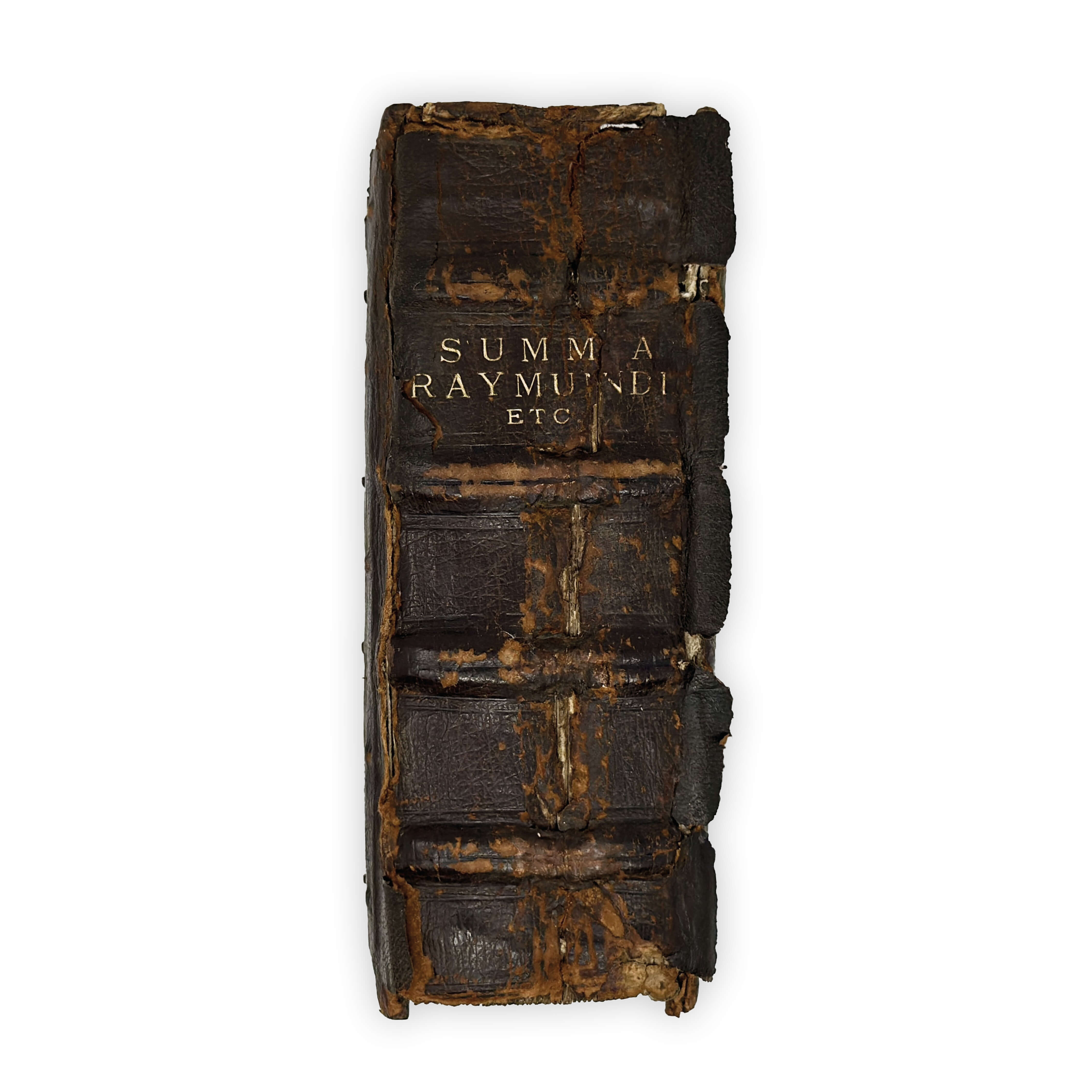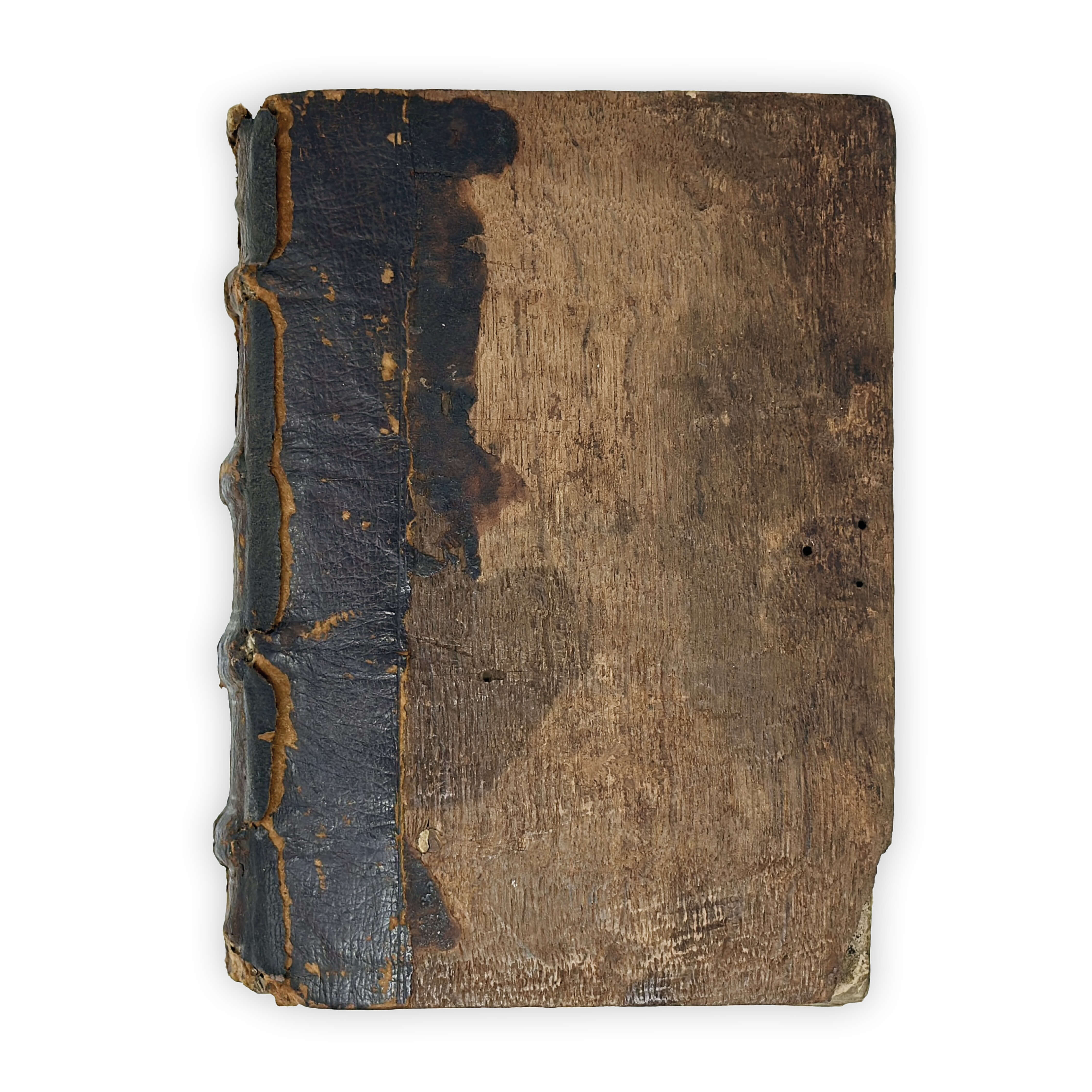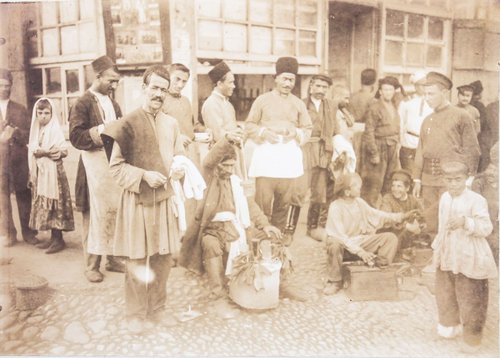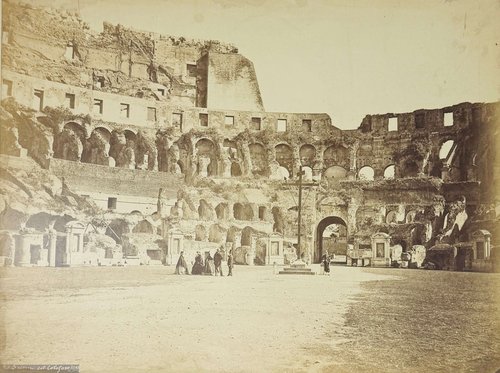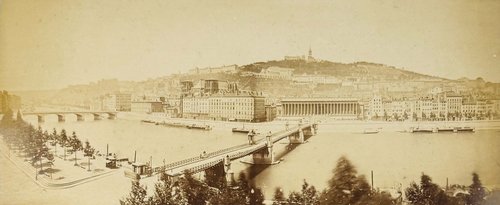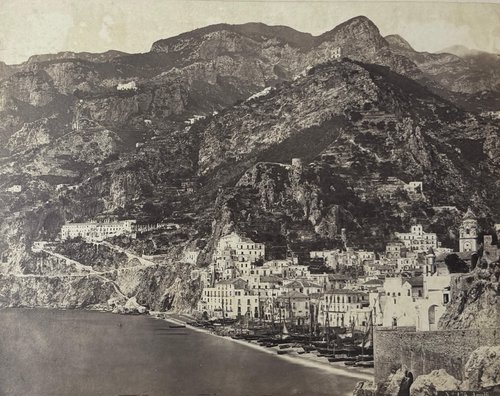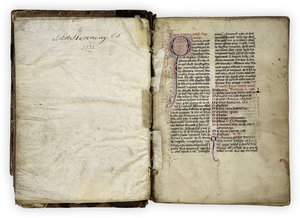
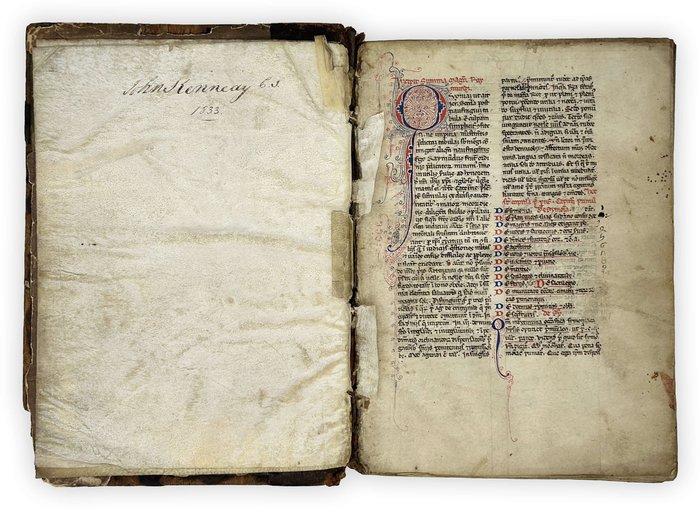
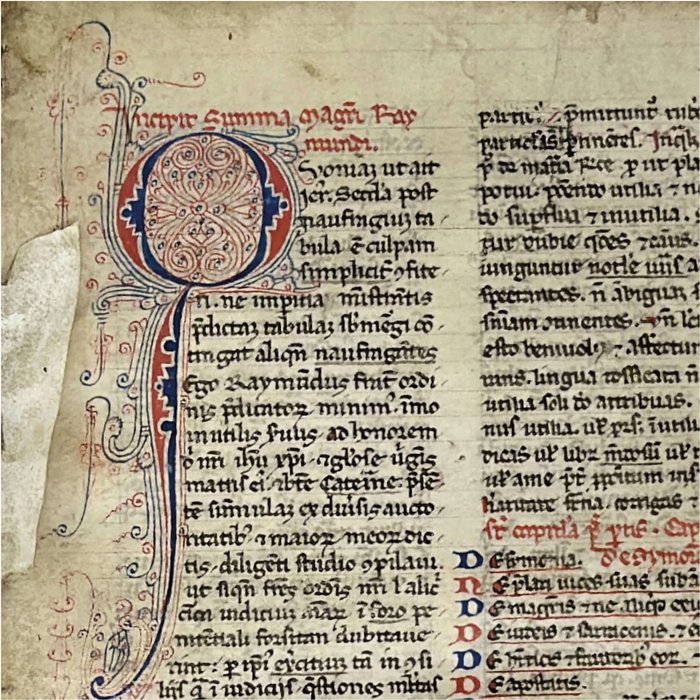


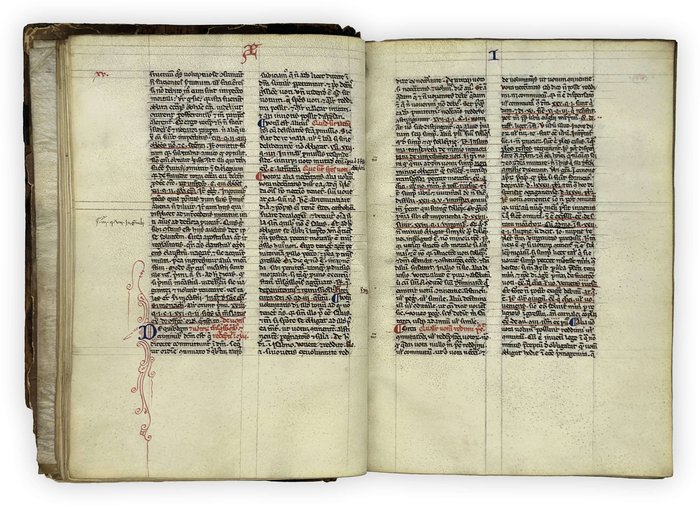



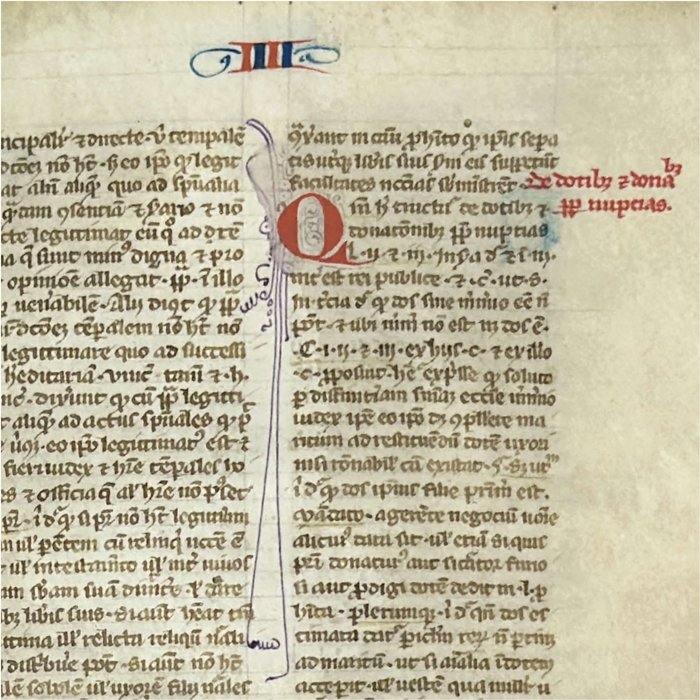
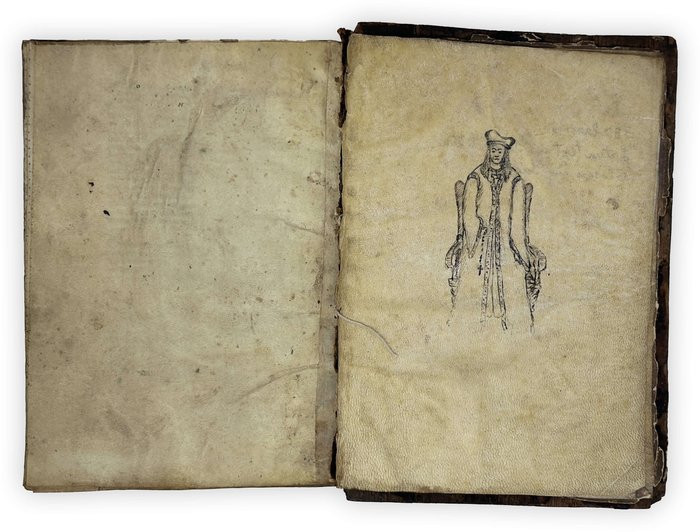


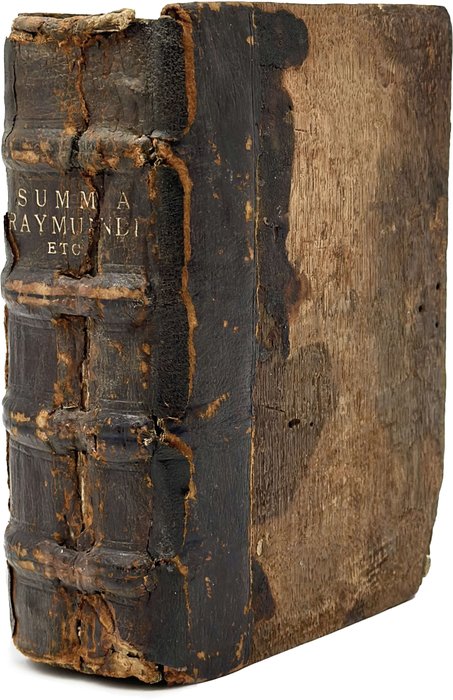
#Book02
Ca. 1275-1300
332 unnumbered leaves, complete. 18,5x13 cm. In Latin. Decorated manuscript on vellum. Contemporary wooden boards, the leather on the spine remains, but not on the covers. No clasps. Binding is shaky, but intact.
The main text with contemporary foliation for each book in red on the page versos, 37 lines in two columns, ruled space, contemporary marginal annotations, rubrics in red, capitals touched in red, paraphs and small initials alternately red and blue, chapter headings in red and blue, elaborate penwork initials in red and/or blue with alternating flourishes extending into the margins throughout (occasional marginal thumbing and staining, l.268-272 with a horizontal marginal cut not affecting text. Later protective cloth box.
Provenance: A 19th-century inscription on the first flyleaf reads ‘Abbey Cambron’. Cistercian Cambron Abbey in Belgium, dissolved in 1782, in 13th century one of the wealthiest monasteries of Hainault with an important library (many of the surviving manuscripts from this library are inscribed – often repeatedly – ‘de Camberone’, an inscription not found in the present manuscript); ‘John Kennedy C.S. 1833’ on the first flyleaf
Content: Raymond of Peñafort (1175-1275), Summa de poenitentiae et matrimonio, beginning 'Incipit Summa Magistri Raymundi / Quoniam ut ait Ieronimus', ff.1-149: Book I f.1, Book II f.38v, Book III f.65, Book IV f.126v; definitions and concordances ff.145v-149; Prayers of Saint Ambrose before Mass for each day of the week (today ascribed to John of Fécamp [d.1079]), beginning ‘Summe sacerdos et vere pontifex’ ff.149v-150; William of Rennes (fl. 1240–1245), Apparatus, ff.151-331v: Book I f.151; Book II f.186v; Book III f.215; Book IV f.300; blank f.332.
The most popular manual for confessors, by one of the main canonists of the Middle Ages. A monument to one of the important period in the history of Western European manuscript books, in which unprecedented technical mastery was achieved and the classical Gothic design system was formed.
The manuscript contains two of the most popular manuals for confessors in the Middle Ages, authored by Raimundo de Peñafort (1175–1275), a famous Catalan theologian and canonist, associate of King Jaime I and chaplain of Pope Gregory IX, the third general of the Dominican order, canonized in 1601 (patron of canonists and lawyers). He came from a Catalan noble family, studied in Barcelona and Bologna, where he received doctorates in civil and canon law. Returning to Catalonia in 1222, he entered the Dominican Order and soon gained great influence at the court of King James I with his learning, becoming his confessor. In 1230, he was summoned to Rome by Pope Gregory IX to participate in the development of a unified code of canon law. As a result of his work, the first official Code of Canon Law of the Catholic Church was published in 1234, known as the Decretals of Gregory IX or Liber Extra, which became the most famous legal text of the European Middle Ages. In 1236, he returned to the Iberian Peninsula, and from 1238 to 1240 he held the position of General of the Dominican Order, serving at the court of James I. He devoted much attention to missionary work, initiated public disputes between Christians and Jews, and inspired Thomas Aquinas to write the Summa Contra Pagans. The Summa on Cases of Penitence was written by Raymond de Penyafort around 1223–25, after his entry into the Dominican Order. It dealt with various matters of secular and religious life and was intended to assist his fellow Dominicans in hearing confessions, an important function of the Order since its founding. After working on the Decretals of Gregory IX in 1234–35, he compiled a second version of the Summa, bringing it into line with that body of canon law. At the same time, he compiled a Summa on Marriage, which was often circulated as the final book of the first Summa. The manual was a great success, and the second version is known in more than 311 manuscripts, not counting this one. The large number of manuscripts can be explained in part by the fact that Humbert of Rome, the Dominican Master General from 1254 to 1263, included Raymond's manual among the seventeen essential works that were to be contained in all Dominican libraries. It was also among the works considered essential for students at the University of Paris and distributed through its book workshops. However, the complete text of the manual was not printed for the first time until 1603.
The present manuscript contains the three Books of the Summa de poenitentiae, or Summa Casuum, which were composed between 1222 and 1225, followed by De Matrimonio. The latter was written after Raymond had revised the Summa around 1234. It is an updated version of the treatise of the Bolognese canon lawyer Tancred and was often circulated separately.
These texts are followed by the apparatus of the otherwise unknown Dominican William of Rennes (Guillelmus Redonensis, fl. 1240-45). His commentary was transmitted alongside Raymond’s work in most of the manuscripts and early editions and enjoyed an almost equal authority during the later Middle Ages.
This manuscript is divided into four books on the topics of God, society, the priesthood, and marriage. The first book, which discusses sins against God, begins with simony, i.e., the sale and purchase of ecclesiastical offices. The second book deals with sins against one's neighbor, including murder, theft, and usury, as well as participation in duels and tournaments. The third book includes a chapter discussing Catholic doctrine and the application of penance. Finally, the fourth book, i.e. the "Summa on Marriage", examines the issues of betrothal, impediments to marriage, divorce, the legitimacy of children and dowry.
The 13th century in Western Europe is a historically important period associated with the rapid growth of cities and their independence, the development of culture and literacy, and the emergence of the first universities. These changes primarily affected France, and especially its northern and central regions, whose cities, with the support of monarchs, experienced a particularly bright flowering.
The spread of literacy and the expansion of the network of universities, the main one of which was considered and was the University of Paris, required a change in the entire system of manuscript book production: already from the beginning of the 13th century, its production was rather quickly relocated from monasteries to secular workshops. In urban conditions, the production of manuscript books gradually began to acquire the character of a guild production, in which masters of various specializations participated: parchment makers, scribes, artists, bookbinders. At this time, such a harmonious system of writing and artistic design of manuscripts was created in France and such a high level of technological mastery was achieved, which we do not encounter later. Manuscript books created by French masters of the 13th century became models for numerous secular and monastic scriptoria in Western Europe for a long time. Various decorative elements developed by French miniaturists and calligraphers of the 13th century remained in books until the invention of printing.

